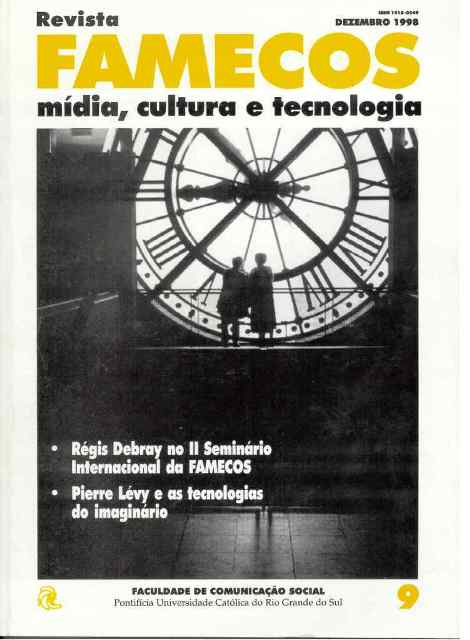Here, now: power and myth
DOI:
https://doi.org/10.15448/1980-3729.1998.9.3016Keywords:
Communication, Telejournalism, Fait diversAbstract
The present essay will gather some evidence on the television news program Here, Now, of the Brazilian Television System (SBT). They emerged from a semiological survey, carried out in nine editions, of 1997, fixed on the production of meaning. The Barthes paradigm was used, above all, through the categories Fait Divers, Poder e Mito, focused on the informative typology and the organization of each edition. The nine editions of the television news series, 29, 30 and 31 of July and 1º, 04, 05, 11, 12 and 18 of August, of 1997, totaled 59 telerreportagens. All were typified as Fait Divers, in their various expressions, which also determined the organizational logic of each edition.Downloads
References
ADORNO, Theodor e HORKHEIMER, Max. Dialética do Esclarecimento: Fragmentos de estudos filosóficos. 2.ed. Rio de Janeiro: Jorge Zahar, 1986.
BARTHES, Roland. Mitologias. 9.ed. Rio de Janeiro: Bertrand Brasil, 1993.
BARTHES, Roland. Ensaios Críticos. Lisboa: Edições 70, 1971.
BARTHES, Roland. A Aula. São Paulo: Cultrix, s.d.
GIANNINI, Silvio. O Rosto da Periferia. Revista Veja. São Paulo, 18 de novembro de 1992, p. 99.
MAQUIAVEL, Nicolau. O Príncipe. São Paulo: Martins Fontes, 1993.
MORIN, Edgar. Cultura de Massas no Século XX: O espírito do tempo, 1 Neurose. 6.ed. Rio de Janeiro: Forense Universitária, 1984.
SQUIRRA, Sebastião. Boris Casoy: O Âncora no telejornalismo
brasileiro. 2.ed. Petrópolis: Vozes, 1993.
Downloads
Published
How to Cite
Issue
Section
License
Copyright
The submission of originals to Revista Famecos implies the transfer by the authors of the right for publication. Authors retain copyright and grant the journal right of first publication. If the authors wish to include the same data into another publication, they must cite Revista Famecos as the site of original publication.
Creative Commons License
Except where otherwise specified, material published in this journal is licensed under a Creative Commons Attribution 4.0 International license, which allows unrestricted use, distribution and reproduction in any medium, provided the original publication is correctly cited.






